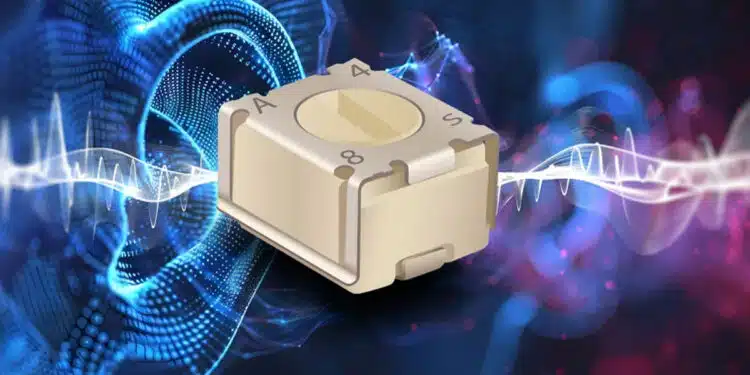Bourns is helping developers make significant strides in this area with its Trimpot® trimming potentiometers. And, specifically for hearing aid designs, it is the Trimpot® Model 3312 which offers a unique blend of precision, durability, and flexibility that enables substantial improvements in device performance.
In the rapidly evolving landscape of non-critical medical devices, hearing aids stand out as an essential device that helps millions of people worldwide enhance their quality of life through better hearing.
A hearing aid works by converting acoustic energy into electrical signals, which are then amplified and sent back to the ear as acoustic energy. This process involves several key components:
- Microphone: Converts sound to electrical energy.
- Amplifier: Increases the strength of the electrical signal while maintaining sound quality.
- Volume Control: Manages the overall signal strength after amplification.
- Receiver (Earphone): Converts the amplified electrical energy back into sound.
- Battery: Provides the necessary power for the device.
Each component must function flawlessly to ensure optimal performance, and this is where Bourns® Model 3312 comes into play.
Fine-Tuning Hearing Aid Functionality
Authentic Bourns® Model 3312 Trimpot® trimming potentiometers are engineered to fine-tune the functionality of hearing aids, providing precise control over their various operational aspects. Here’s how they contribute:
Adjustability
The very small Trimpot® device can be used within the internal controls of the hearing aid, allowing audiologists to make fine adjustments to tailor the hearing aid’s performance to individual needs. This includes adjusting the volume control as a rheostat where it is able to modify the current through the microphone and amplifier. The result is the sound output is enhanced without distortion.
Durability and Reliability
Designed to endure the rigorous assembly process of hearing aids, which includes soldering of the microphone, amplifier, and volume control followed by a wash process, the Model 3312 device is sealed to withstand these conditions. This makes it particularly suitable for smaller, intricate hearing aid designs such as Behind-The-Ear (BTE), In-The-Ear (ITE), and In-The-Canal (ITC).
The Model 3312 offers:
- Standard Resistance Range: 10 Ω to 2 MΩ.
- Adjustability: Features a voltage divider with ±0.4% adjustability and a rheostat with ±0.8%.
- Environmental Resilience: Operates effectively across a temperature range of -55 °C to +125 °C and is resistant to shock and vibration, ensuring consistent performance in various conditions.
Conclusion
With the integration of Bourns® Model 3312 Trimpot trimming potentiometers in hearing aids, users can expect a significant enhancement in sound quality and device reliability. These components not only extend the functional capabilities of hearing aids but also ensure they can be finely adjusted to meet the specific needs of the user, making them an indispensable tool to further enhance modern hearing aid technology.































